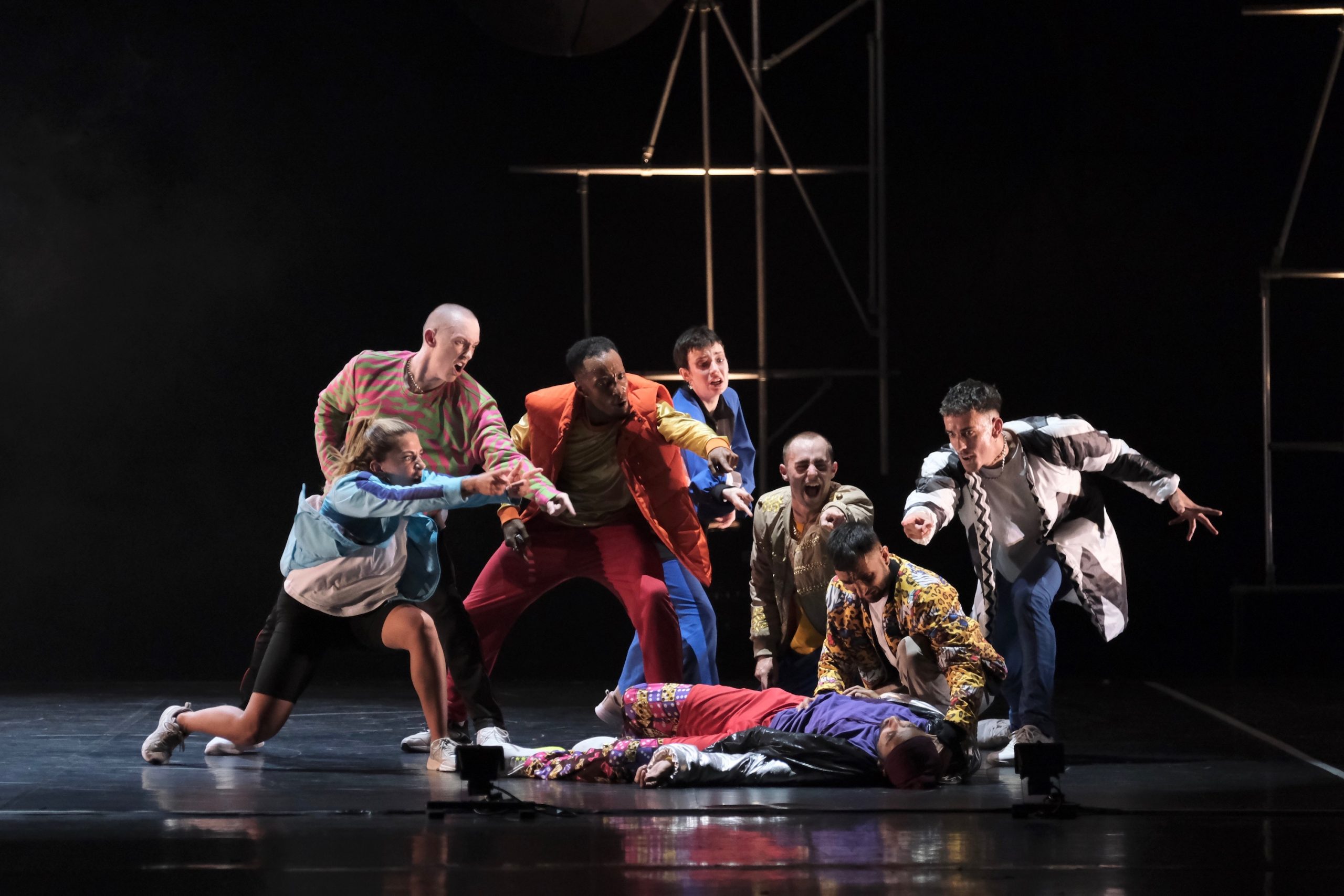
Comment Editor Ffion Hâf reviews Rosie Kay’s Romeo and Juliet, a modern danced re-imagining of the classic Shakespeare tale
Content Warning: This article contains themes of suicide which some readers may find distressing.
As someone who adores the work of Shakespeare, Romeo and Juliet being a firm favourite, I was conflicted when wondering how I would find the re-imagination of the classic tale. Relocating to the summer of modern-day Birmingham, the play redefines Shakespeare’s original and turns it into something completely different, yet just as brilliant. Amidst the harsh realities of urban gang culture, two young lovers are led to their tragic deaths by events they cannot control. It evokes the same feelings as its counterpart, both raw, compelling, and emotional – I was not disappointed.
Created collaboratively by Rosie Kay and with the cast of dancer-choreographers skilled in contemporary, street, and Indian classical dance styles, the play was both inspired and fuelled by Kay’s work within the city’s communities. To ensure that the play stayed true to its Birmingham roots, Kay also researched with pupils of Birmingham’s Nelson Mandela School, families and young people affected by crime and South Asian choreographers.
“They refuse to sugar-coat real problems found in our everyday lives
In this diverse recreation, instead of romanticising the tragedy of teen suicide, we are presented with a despairing tale in which every character loses something dear to them and are left vulnerable. The centre point of the play revolves around the harsh realities of gang violence; what I admire about Kay’s version is that they refuse to sugar-coat real problems found in our everyday lives. Instead, we see the pain and the damage that these groups cause, hitting the audience exactly where it should.
The diversity of the city is found not only in its choice of casting but through both the choreography and the score, combining a range of styles from various backgrounds. The dancing, this results in a mix of balletic contemporary with brief moments of the street, nods to Indian classical dance and energetic ensemble work. The music serves to complement this sense of multiformity, which in itself is a hybrid of hip-hop, contemporary, and Indian classical dance. The styles flow naturally from the multi-ethnic dancers themselves. The diversity of both the cast and choreography means that the centre of the gang’s rivalries shift away from the almost expected topic of race or heritage background and instead sheds light on other factors, such as peer pressure and drug abuse.
“The chemistry between the dancers is undeniable
The opening scene is alive in its rush of activity, and the use of bright ‘street’ clothing only emphasises this. The dancers are recognised as rival gangs, the Capulets and Montagues, in the urban setting of Birmingham. However, it is not until the play truly gets moving that we begin to understand the intended characters. The street party, a clear take on the Capulet ball, is dynamic and energetic, and the chemistry between the dancers is undeniable. A personal favourite of mine was the performance of Rosa (Ayesha Fazal), her movement was both captivating and unique, which made her stand out in the crowd of dancers.
Although a stunning performance throughout by all dancers, the play truly begins when Romeo (Subhash Viman Gorania) and Juliet (Mayowa Ogunnaike) meet. The dancers’ contrasting styles only emphasises the beauty of their union, proving that despite their different backgrounds, love conquers all. Whilst she holds her form tightly, his movement is fleeting. However, as tradition goes, opposites attract, and when they finally come together, they are aligned in both soul and movement, mirroring each other’s actions, and becoming one union. Romeo and Juliet’s relationship is conveyed with striking detail, found only with those who truly understand and love their craft. There is a genuine tenderness between the pair as they mould into one, and the inevitability of their ending becomes piercingly sad as we watch their relationship flourish.
“It was at this moment during the play that I had to sit back and consider what was unfolding in front of me
Undoubtedly, the most impactful part of the play is after the tragic death of the central characters. The use of the body bag combined with the audiotape featuring a police report of suicide takes the play away from fiction and into today’s reality. It was at this moment during the play that I had to sit back and consider what was unfolding in front of me. Although the topic of suicide in any shape or form is distressing, watching the teens take their lives on stage is the rawest yet most effective way to have the message hit home.
A beautiful creation in its own right, the play is almost held back with its attempt of following Shakespeare’s narrative. To both those who adore the original play and who have never seen it, the modern take was at times confusing and the audience was left trying to piece the puzzle together rather than taking in what was right in front of them. It was not an easy play to follow. Despite this, the time and effort put into the play was evident in every aspect – each individual detail carefully crafted. It captures what is at the heart of Shakespeare’s play and makes it feel real.
At the end of the night, Romeo and Juliet was truly a pleasure to watch. It turns the classic over on its head and makes it something unsettling yet beautiful. Audiences are urged to consider the events that have just taken place on stage and understand that these are not fictional; they are occurrences that happen all too often in real life. Kay is blunt yet honest in their depiction of teenage gang culture and that is exactly what is needed as it is topic not addressed often enough. Plays like these are crucial to starting the discussion which will enable change. Perhaps it is too late for Romeo and Juliet, but it is not for those out on the streets currently.
Enjoyed this? Read more on Redbrick Culture!
Dance Show Review: Message in a Bottle
Ballerina with Dementia Remembers Choreography: How the Arts Stay with Us

Comments